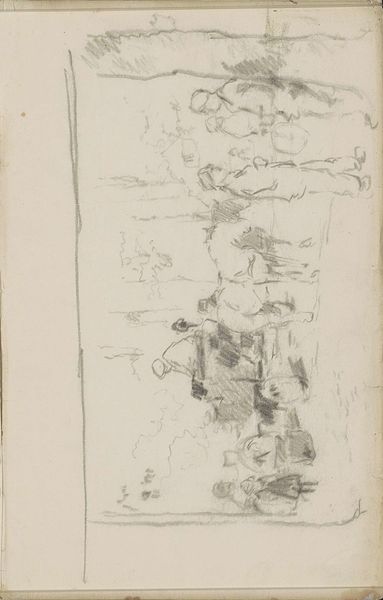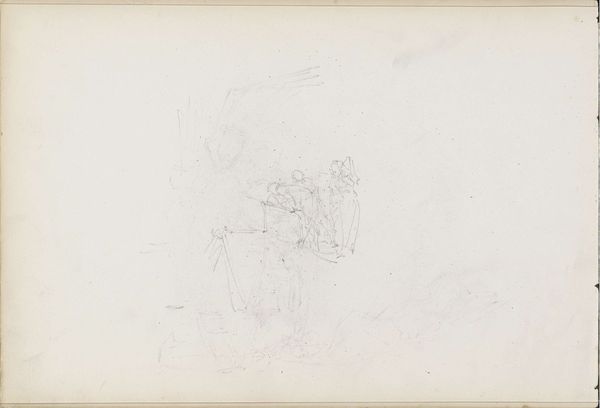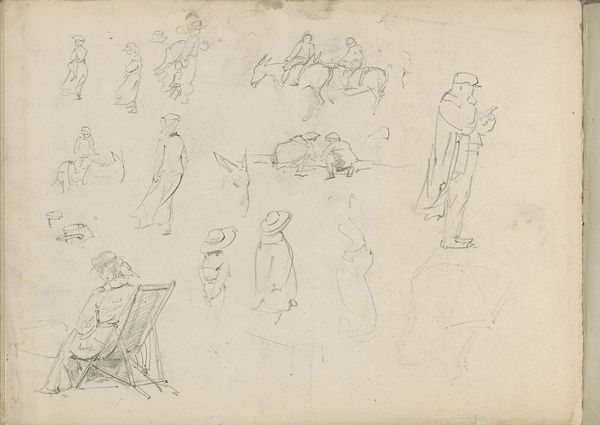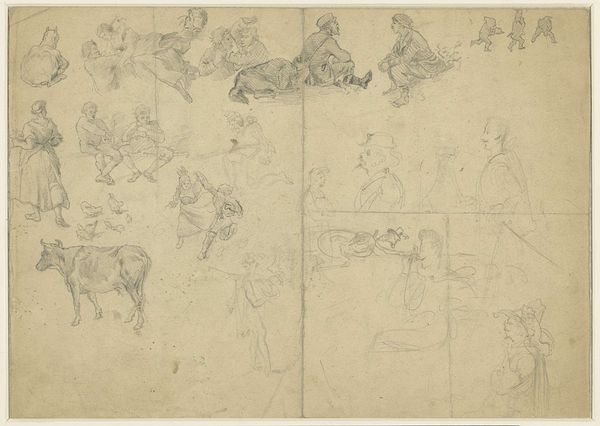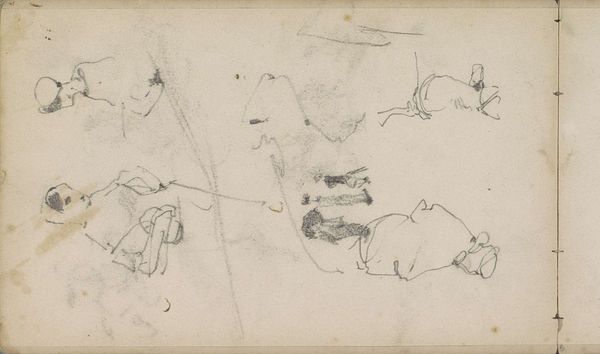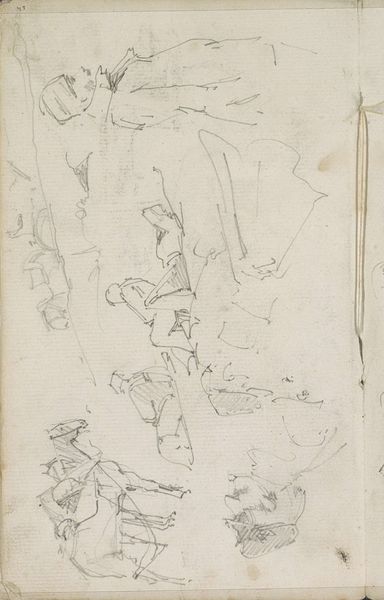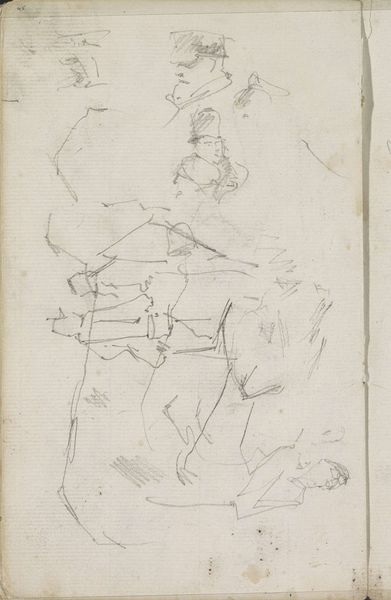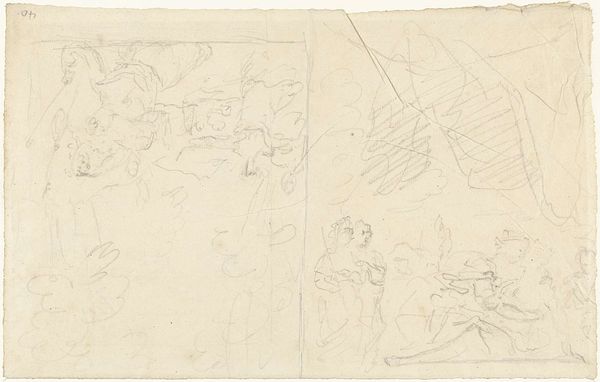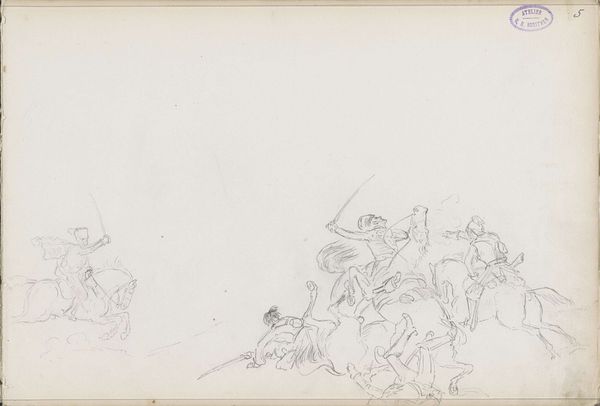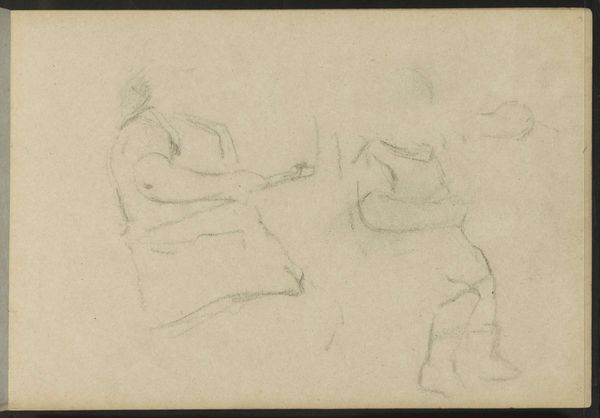
drawing, paper, pencil
#
portrait
#
drawing
#
figuration
#
paper
#
pencil
#
genre-painting
#
realism
Copyright: Rijks Museum: Open Domain
Curator: Immediately I see a hushed stillness, despite the crowd. It's as if Bosboom has captured a moment of serene reflection amid daily life. Editor: Indeed. Here we have "Women and Children in Scheveningen Costume", a pencil drawing on paper, made by Johannes Bosboom around 1873. It's currently held here at the Rijksmuseum. What symbolic resonance do you find here? Curator: For me, the costumes themselves act as potent symbols. Traditional garb roots these women and children in a specific time and place – a proud display of Scheveningen identity. The variations in dress might even indicate different social strata or familial roles within the community, speaking volumes about their world. Editor: You're right, it’s a tableau of social relationships, carefully composed. The sketches, seemingly unfinished, invite us to imagine these women's lives. The simplicity, though, makes me think of memories--fragmented and soft-edged. Curator: Precisely! The artist uses minimalism to evoke feelings of nostalgia. We can consider the historical context too. This piece emerges during a time when industrialization and urbanization were threatening traditional ways of life. Editor: So it functions almost as a visual preservation effort. Capturing and celebrating a fading cultural heritage before it disappears entirely? It's both melancholic and…dare I say… hopeful, suggesting a desire to keep these traditions alive in memory. Curator: Yes, Bosboom appears to use these costumes as almost emblems or totems. They act as a continuous cultural thread stretching into both past and future generations, encapsulating heritage and identity. There's so much wrapped up in the deceptively simple scene. Editor: It really resonates. You've provided a lens into not only this culture but also what could potentially vanish. And here it stands as an important piece that should definitely continue to be pondered on. Curator: Thank you, and thank you for illuminating these subtle layers alongside me, this drawing is an open book of sorts. Editor: Agreed, let's keep this book open, inviting endless insights from these visual markers from history.
Comments
No comments
Be the first to comment and join the conversation on the ultimate creative platform.
